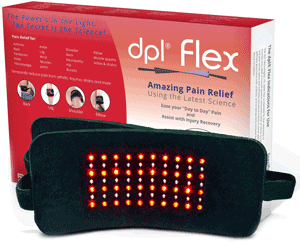Here it is folks, for those of you who are good little boys and follow the ketogenic diet for acne and get good results… but are maybe a little tired of the serious restriction on carbohydrates – your saviour has arrived with a message of hope.
I thought I’d experiment a little recently with my ketogenic diet. I’ve been clear now for some time, and I enjoy eating the way I do.
Eating near zero carbohydrates, as I constantly expound, have not only given me the greatest reduction in my acne but also improved my energy, vigour, sleep, productivity, vastly enhanced mental clarity… just about everything.
But lately I’ve been doing some selfless experimentation for those of you not strong-willed enough to cope with a carb-less lifestyle.
(This is mainly in response to the four millionth email I’ve gotten asking if there is “another way” to eat a low carb diet without, erm, restricting carbohydrates…).
And over the last three months I have found precisely two food sources of carbohydrates my acne-prone skin will tolerate.
And yes, I’m going to share them with you.
To recap my current diet
There is a clear relationship between eating carbs and acne. Because insulin is a highly acne-genic hormone, responsible for many hormonal and physical changes which can lead to breakouts (as you can read about here) I eat a very, very low carb diet and it works incredibly well at keeping my skin clear.
This diet is lower in carbs than what most people would call a low carb diet – which is generally less than 150g of starchy or sugary carbs per day.
I normally eat less than 30g of these types of carbs per day, and can frequently go days at a time without eating more than 10g/day.
My skin stays almost completely clear eating this way – the rest of my anti-acne regimen consists of the supplements you can read about here along with several lifestyle factors (like taking cold showers, and exercising in the only way which minimises acne).
When these diet and lifestyle strategies are used in combination, I get no acne. Ever.
What I do eat is a lot of fat (65% to 75% of my diet) and moderate protein, along with plenty of fibrous vegetables to keep all that meat moving through the system…
This is a diet called the ketogenic diet, where essentially your body adapts to run on ketones (products of fat metabolism) rather than glucose (a sugar which increases in the blood after eating carbohydrates, which requires insulin to bring blood sugar levels back to normal).
And it’s quite simply awesome at clearing acne.
I also don’t eat breakfast, which helps keep inflammation lower compared with eating the usual three-squares-a-day.
But it’s also very restrictive, especially if you’re used to eating a “normal” western diet or even a conventional “healthy” diet.
And while I have the entrenched willpower of a particularly stubborn ass, and will stick to a pre-formulated diet plan religiously like some kind of food-monk if it’s producing the desired effect on my skin… I realise that I should not be holding the rest of mankind to my insanely obsessive standards.
Introducing carbohydrates into the only diet plan you need to try
Carbohydrates are quite simply the devil when it comes to acne, at least for me.
So it was with some trepidation that I set out on this selfless quest to find out if there are any carbs my acne-prone skin will tolerate, purely for those of you who for some reason just need to eat carbs.
I started by looking at the insulin index and ranking the carb sources by insulin score. The higher the number, the greater the insulin response produced after consumption.
The first carbohydrate I ate any significant amount of was popcorn, because I used to love popcorn in the bad old days before I got clear, and had to give it up.
So I popped my own corn, savoured every last squeaky bite, and promptly broke out with two pimples 48 hours later.
A lesser man might have thrown in the towel at this stage, but not I. For your sakes, I pressed on with my experiment.
I then started right at the bottom of the table, with oat bran. Mixed with a little water into a horrible soggy porridge-like paste, I ate this goop as a dessert after my main meal of the day.
It might have tasted like gruel, but my skin stayed clear even after two weeks of oat bran consumption. So far, so good!
Next on the hit list was quinoa. I’ve never eaten quinoa before because I’m not a hippy, but for the greater good I gave it a try.
All I can say is that it tastes like puffed rice cereal, but soggy and slimy.
Anyway, still no acne after two more weeks. Excellent!
Onto pasta though, and here I suspected I’d be pushing my luck – I used to eat pasta when I had acne. And I wasn’t disappointed – sure enough, after just two days I had about three small pimples around my mouth.
End of experiment then, but with some success – it seems that quinoa and oat bran are acceptable carbohydrates on the low-carb acne diet. Nothing else is, for me at least.
Here’s why I think this is…
Thinking logically about quinoa and oat bran
There is some scientific reasoning behind these two carb sources being well tolerated by my uselessly acne-prone skin.
They might be “high carb” by my standards, but in terms of “net carbs” they are still relatively low.
Net carbs = total carbs – total fiber.
Because quinoa and oat bran are excellent sources of dietary fibre, and therefore relatively indigestible, the net effect on my blood sugar and insulin levels will have been fairly low.
For example, in 100g of my oat bran there are 45g of carbohydrates, and 18g of fiber – making a total of just 27g net carbs per 100g.
This means that at least 40% of the oat bran never even entered my bloodstream, and the fiber element will have slowed down the absorption of the carbs which were digested – so my blood sugar stayed relatively stable.
Contrast this to pasta, which contains a lot more flour and a lot less fibre, and you start to see why these two carb sources alone failed to lead to acne.
Did I still keep the other great benefits of the ketogenic diet?
It may be entirely psychological, seeing as I’ve eaten virtually no starch or sugar for a couple of years now, but I don’t think I did.
Apart from a slight drop in energy, which I might have imagined, there was one definite drawback to including carbs.
All of a sudden, I was hungry when I woke up.
And this is an abomination to me these days. One of the main reasons I like eating ketogenically is that I don’t have to worry about eating breakfast.
Intermittent fasting is great for lowering inflammation levels, so skipping breakfast means I keep inflammation to a minimum and also allows me to simply get on with kicking the day’s ass without having to think about food until 1 or 2pm. By this time the day’s ass has been thoroughly kicked and I can reward myself with a delicious, meaty lunch.
But incorporating quinoa into my evening meal meant I woke up with a rumbling stomach.
And that meant I couldn’t quite concentrate on my ass kicking, and by 10am I was craving lunch.
Including carbs at lunch meant I had the usual sleepy feeling in the afternoon, known as the “3pm lull”. And I can’t afford “lull-time” these days, so all in all I’m not going to be changing my diet as a result of this experiment.
Other than that, I can’t say I noticed any disadvantages to including these carbs, and my skin stayed nicely clear. It’s just that the one drawback I did get (hunger) is enough for me to go back to zero-carbing.
All of which leads me to conclude that if you feel you must eat some carbohydrates, quinoa and oat bran are two reasonable choices.
Having said that…
We’re obviously all going to be different in this respect and just because I can’t eat X, Y or Z without getting acne doesn’t mean you can’t.
But if I can eat a mainly-low-carb diet and still tolerate quinoa and oat bran without breaking out, it’s a decent bet you will be able to as well.
If you still insist on expanding the carb sources further, I suggest you start at the bottom of the insulin index above and work your way upwards. Be sure to introduce foods one at a time for at least two weeks, otherwise it’s easy to confuse what your skin can and can’t cope with.
Happy cheating, folks.


